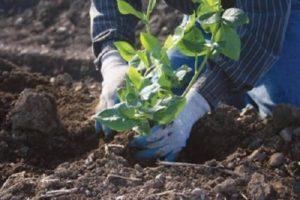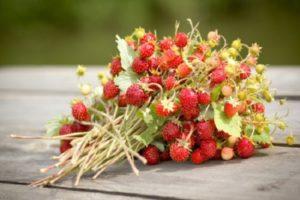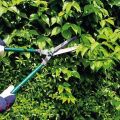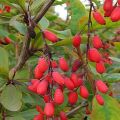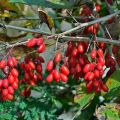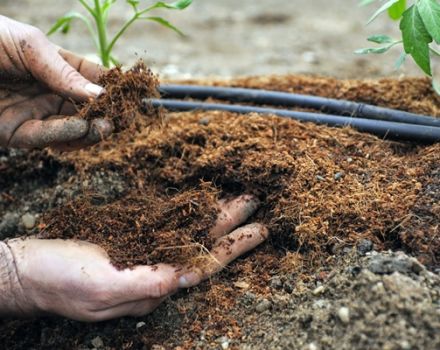Planting and caring for barberry shrubs in the open field, reproduction and cultivation
Many gardeners want to know how to grow a barberry shrub, plant and give proper care. The plant is unpretentious: it is easy to cultivate. But you need to get a neat and beautiful bush. Many gardeners grow crops for the sourish fruits. They contain vitamins, antioxidants, and therefore are very useful. An excellent marmalade and vitamin compotes are prepared from the berries.
Content
- 1 Is it possible to grow barberry in the garden
- 2 In which regions it is possible to grow
- 3 How to choose and prepare seedlings for planting
- 4 Dates and scheme of disembarkation
- 5 How to care for a tree on the site
- 6 Features of flowering and fruiting
- 7 Collection and application of berries
- 8 How to propagate barberry
- 9 The use of shrubs in landscape design
- 10 What problems do novice gardeners face
Is it possible to grow barberry in the garden
Almost all gardeners grow barberry. In the old cottage, you can find a spreading barberry bush. He has green leaves and bright fruits, collected in a brush. A common barberry, planted in a row, forms an impenetrable hedge. Decorative varieties are grown on a modern summer cottage. They have variegated leaves that adorn the area. Dwarf species are planted on an alpine hill.
The main conditions for successful plant cultivation:
- a place well lit by the sun;
- soils with a neutral or slightly alkaline reaction;
- moderate soil moisture.
The plant quickly adapts to living conditions in the garden and begins to bear fruit.
In which regions it is possible to grow
Under natural conditions, barberry is found in the Caucasus and Primorye. There he forms impenetrable thickets in the open ground. The plant has perfectly adapted to life in midland gardens.
Mature bushes hibernate without shelter, although young ones require preparation for the cold season.
In the Urals, summers are short and hot, and winters are long and cold. Barberry hibernates successfully only under a well-made shelter. Without it, the ground and underground parts of the bush freeze slightly. In Siberia, in addition to the main shelter, it is required to throw snow on the bushes. In the spring they rake the snowdrift, remove the shelter. The barberry is starting to grow.
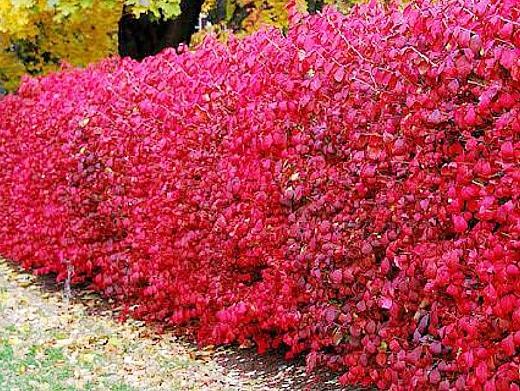
How to choose and prepare seedlings for planting
Preference should be given to 2-year-old seedlings: they take root faster. Plants should have 2-3 well-developed shoots. When buying plants with a closed root system, turn the container over and inspect the drainage holes. White or light yellow roots should be visible through them.This means that the plant has a developed underground part and will soon take root in the garden.
When purchasing a barberry with an open root system, you need to choose a bush with 1-2 strong roots and a developed fibrous part.
Required soil composition
Before planting a bush, you should remember what kind of soil the barberry loves. It grows and develops on light soils and prefers soil that has a neutral or slightly alkaline reaction.
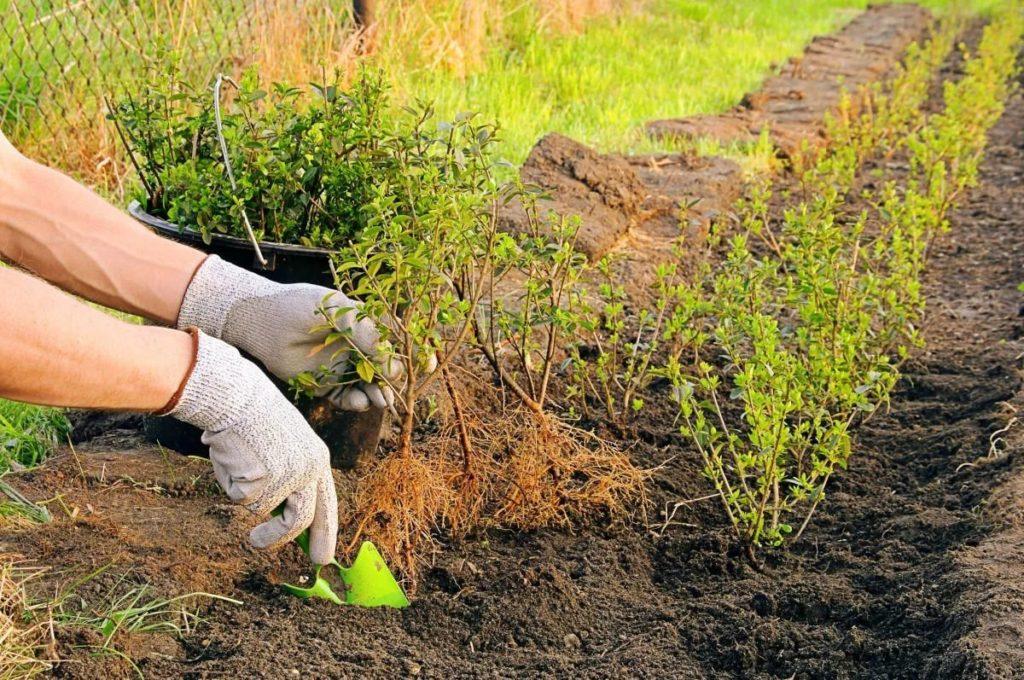
Under natural conditions, the shrub settles on the slopes of the mountains or in the foothills. The soils there are not rich in humus, have an alkaline reaction, which is given by an admixture of rubble. Therefore, he needs soil in the garden, as well as in his habitat. It is recommended to sand clay soils (to create a lighter environment); acidity must be reduced by adding lime.
Additionally, small crushed stone should be added to the planting pit.
Seat selection
Before planting, you need to decide what type of barberry will grow in the garden. It depends on where the shrub will be planted. Ornamental varieties feel great in partial shade, but fruit-bearing varieties require a place well-lit by the sun. Barberry is a sprawling plant, so it should be planted away from other crops. The distance should be at least 2.5-3 m.
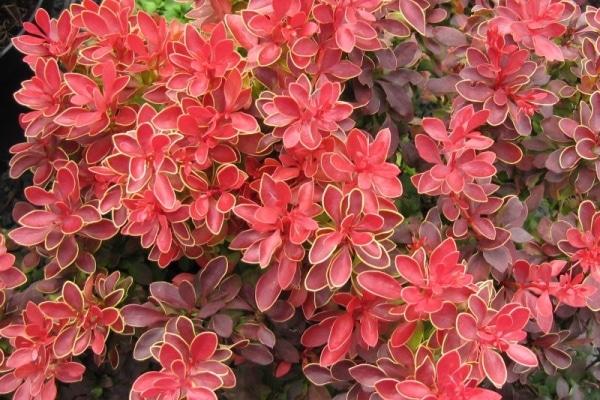
Dates and scheme of disembarkation
Gardeners are interested in when to plant a shrub. The ideal time for planting is early spring as soon as the snow melts. The barberry will have enough time to adapt to its new location and grow its root system for winter. Sometimes it is permissible to plant a bush in the fall, but in this case the planting time should be calculated in such a way that the plant has time to take root before the onset of stable frosts. This will take 3-4 weeks.
But if the purchased plant has a closed root system, it can be planted in summer. The bush is carefully removed from the pots, the roots are straightened, the dried ones are cut out and placed in the planting hole.
A barberry with an open root system purchased in August can wait for spring in a burrow. For this, a ditch is torn off, the excavated soil is piled on the southern side of the ditch. The bush is placed obliquely (top on a mound) and added dropwise. At the top of the hill, part of the shoots with 2-3 buds is left. With the onset of frost, the pit is covered with white lutrasil and covered with snow.
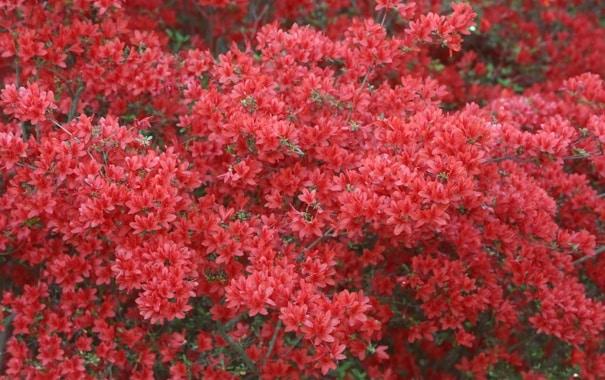
Favorable neighborhood
Barberry grows intensively, but it does not capture the neighboring territory. Old varieties are an exception: they give an abundance of root growth. In one place, the shrub lives up to 50 years, an adult plant does not tolerate transplantation. But during flowering, pollinating insects flock to it: and this should be used.
Experienced gardeners place beds with strawberries next to him: bees pollinate the flowers, and the yield increases. It is important to plant nearby plants that bloom at the same time as the barberry.
How to care for a tree on the site
In order to get a beautiful and regularly bearing plant, he needs to create conditions close to real ones. The beginning of fruiting depends on how correctly the barberry is planted.

The rules for growing a bush are simple: you need to feed the bush on time, water it and prune it.
Irrigation
Barberry does not tolerate excessive moisture. Watering it is required only in severe drought. In an ordinary summer, he provides himself with water.It is required to monitor the moisture content of the trunk circle in young plants that were planted last spring.
In order to retain moisture in the soil, the trunk circle should be mulched with dried plant residues or chopped chips. To prevent the outflow of nitrogen from the soil, it is recommended to spill the chips with a urea solution.

Weeding and loosening the soil
Young barberries require regular weeding: plants are light-requiring, and rapidly developing weeds oppress them.It is recommended to combine weeding with loosening. In this case, you should be especially careful not to damage the roots. Adult plants thrive on turfed tree trunks. With this method of cultivation, you should regularly mow the grass.
Fertilization and regular watering
In nature, the plant does well without fertilization. But crop varieties are needed. But it is important to remember: the plant does not tolerate excess nutrition.When planting, the planting pit is filled with complex fertilizer. Therefore, in the next 3 years, it is not required to feed the barberry.

From the 4th year on, ornamental varieties require nitrogen application in the spring. They should be poured with a urea solution (30 g per 10 liters of water). Fruit shrubs require the addition of potassium and phosphorus. The first feeding is carried out in May-June, the second - in the fall, before preparing the plant for winter.
Often shrubs should not be fed: excess nutrition causes oppression of the plant and provokes diseases.
Crown formation
Barberry is an ideal plant for the garden. Without formation, it turns into a sprawling ball, but tangled branches are very rare: shoots grow almost vertically. The gardener is only required to timely cut out damaged and dried branches, as well as those that interfere with taking care of the shrub.
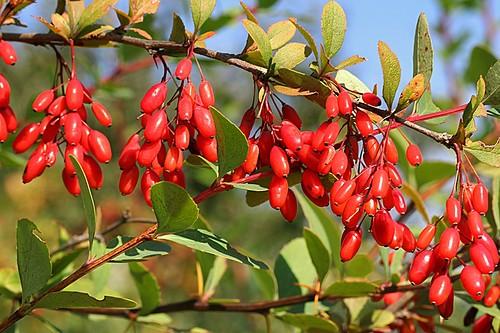
Decorative varieties can be formed in the form of any shape: pyramid, cube, cone. Novice gardeners will need a topiary frame or template for this. The hedge is usually formed in the form of a rectangular parallelepiped. After pruning, the plant should be fed: ornamental varieties should be given foliar top dressing. A fermented herb infusion will do.
After sanitary pruning in the fall, the plant is fed with phosphorus-potassium fertilizers. But it is important to remember: barberry recovers quickly, so pruning should be done regularly.
Preparing a bush for wintering
In regions where winter temperatures are rarely negative, barberry hibernates without shelter. It is enough to carry out sanitary pruning and add a mineral complex.
But in other areas, the plant requires additional preparation for winter:
- cut out unripe shoots (they are light green);
- shorten the rest by 2/3;
- tie the crown with twine or wire;
- cover the top with white lutrasil or spunbond;
- cover the root zone with spruce branches with a layer of 15-20 cm (it will also protect from rodents).
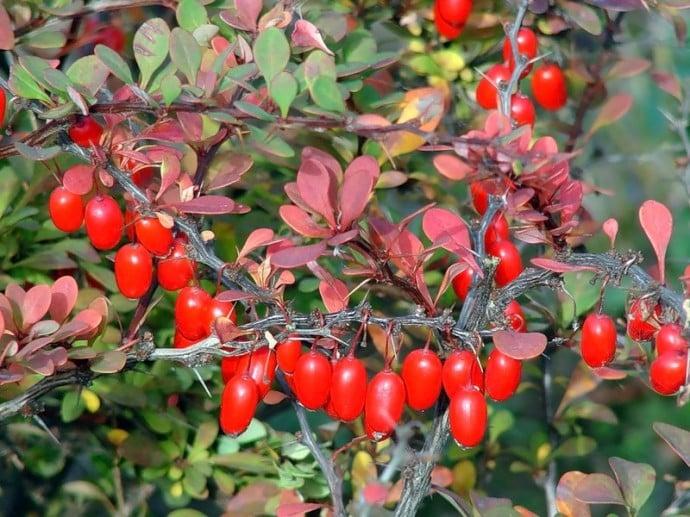
After heavy snowfalls, snow should be poured over the shelter: this way the plant will be better protected.
Preventive treatment of shrubs
Barberry is damaged by aphids, moths and sawflies. To prevent the attack of pests in the spring, it is recommended to carry out preventive treatment of the shrub. Spraying with a solution of "Karbofos", copper-containing preparations is suitable.
Features of flowering and fruiting
Blooming barberry is an excellent honey plant. It attracts pollinating insects to the garden. Long bloom: up to 3 weeks.
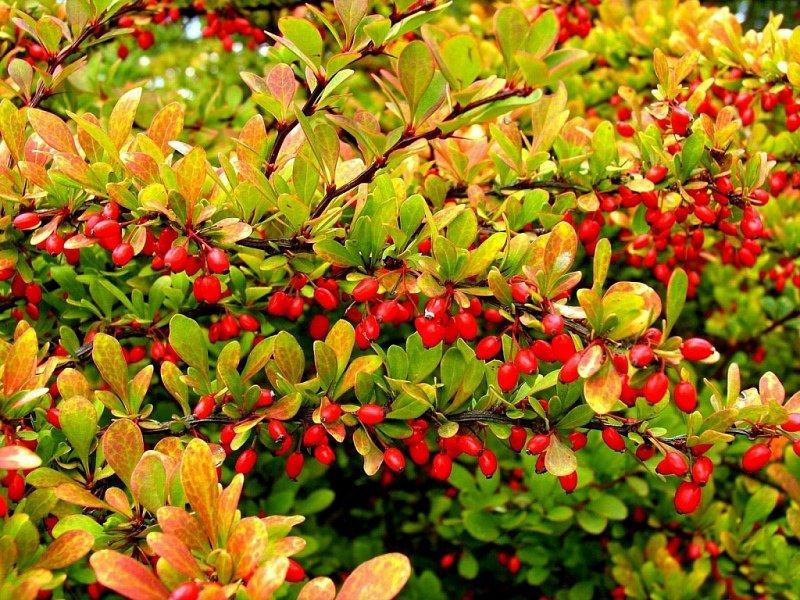
What year does it begin to bear fruit
Berry barberries, when planted with 2-year-old seedlings, begin to bear fruit in the 3rd year of life in the garden. When forcing plants from seeds - for the 5-6th year. The shrub yields annually.
Flowering and ripening period
Flowering begins in May, but there is no clear time frame: it depends on the average daily temperatures. The shrub blooms for 2-3 weeks. At the same time, it smells good.
Collection and application of berries
Red barberry ripens at the end of July. The fruits do not crumble, they stay on the branches until the cold weather. But their taste spoils: for use in food and preparation of blanks, it is required to pick the fruits before the beginning of September.
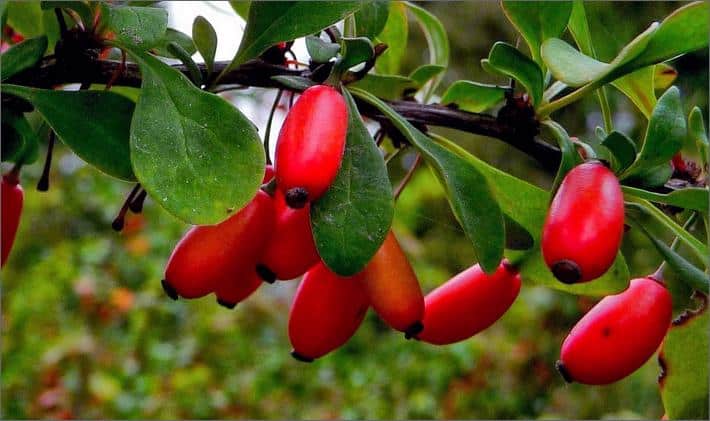
How to propagate barberry
Gardeners know different ways of breeding barberry:
- Old varieties of barberry reproduce with abundant root shoots.It is dug up and planted in the spring in its permanent places.
- Hybrids and plants on the stock should be propagated exclusively by cuttings or grafting into the crown of another barberry: other methods will not transfer the qualities of the mother plant.
- Varieties can be effectively (albeit long) propagated by seeds. This should take into account the need to stratify the material. It is required either to sow before winter, or to stand for 60 days in the refrigerator in a damp cloth.
- A method that does not require labor from the gardener is reproduction by layering. In early spring, the branch is pinned to the ground, sprinkled with soil, the top is cut off. The next spring, the finished plant with a lump of earth is planted in a permanent place.
- Delenka is a method used when there is a desire to transplant an adult bush. The plant is carefully removed from the ground in the spring, shaking off excess soil, and cutting off damaged roots. Then they are divided into the required number of parts, weak shoots are cut out from the aerial part, strong shoots are cut to hemp with 3-4 buds. Delenki are immediately planted in a permanent place and shaded from the sun.
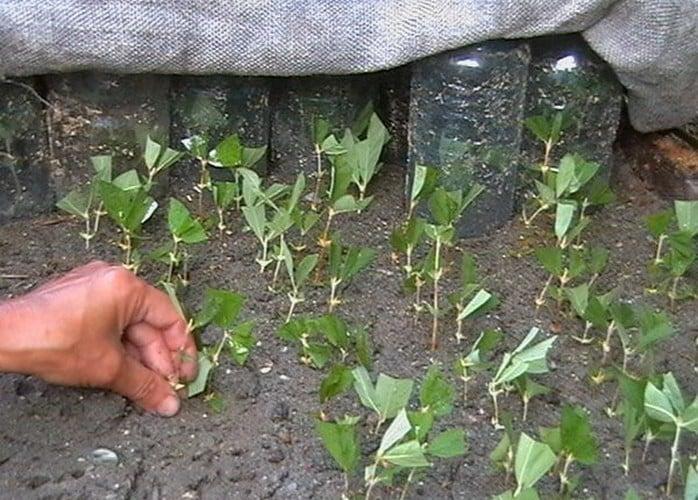
It is important to remember: seed and planting material should be taken only from healthy plants.
The use of shrubs in landscape design
The main value of barberry is a quick recovery after pruning and decorativeness throughout the year: from early spring to winter. Against the background of the snow cover, scarlet clusters of berries look attractive. It is the decorativeness of the shrub that makes it attractive for landscape design.
Breeders offer various decorative varieties and hybrids of barberry. They are small in size and have unexpected foliage colors. But the fruits have a specific bitter taste: they are not eaten. Such graceful bushes adorn rock gardens, paths.
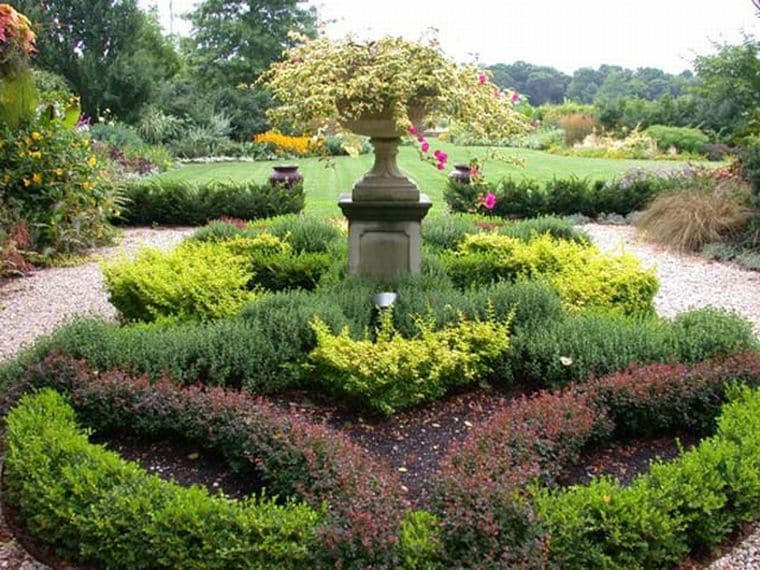
Gardeners use large-sized ones to create impassable hedges. In this case, they are planted in a checkerboard pattern at a distance of 50-100 cm from each other. The common barberry can be used as a specimen plant. It is cut into its original shape and admired throughout the year.
What problems do novice gardeners face
Barberry is an unpretentious plant, and novice gardeners have nothing to fear: they can easily cope with caring for it. But it is recommended to provide for the possibility of making some mistakes:
- Planting in a lowland or on a territory flooded in spring. Barberry does not tolerate soaking roots.
- Accommodation on acidic soils. The shrub stops growing.
- Excess nitrogen in the soil. This mistake leads to fungal infections.
- Planting too often. Plants are inconvenient to care for.
- Frequent and abundant watering. The roots rot, the plant dies.
- Neglecting regular pruning. In fruit barberries, it leads to a decrease in yield, in decorative barberries, it leads to loss of foliage color.
- Shade accommodation. The plant will be oppressed: it loves sunlight.
- Planting too close to other crops. Barberry is actively growing, and its shoots will interfere with caring for neighbors.
- An attempt to transplant an adult bush. Most likely, he will die. It is recommended to use cuttings or cuttings for planting in a new location.
- Planting a seedling with an open root system at the wrong time.
For successful cultivation of a shrub, you should carefully study all the rules and follow them.
